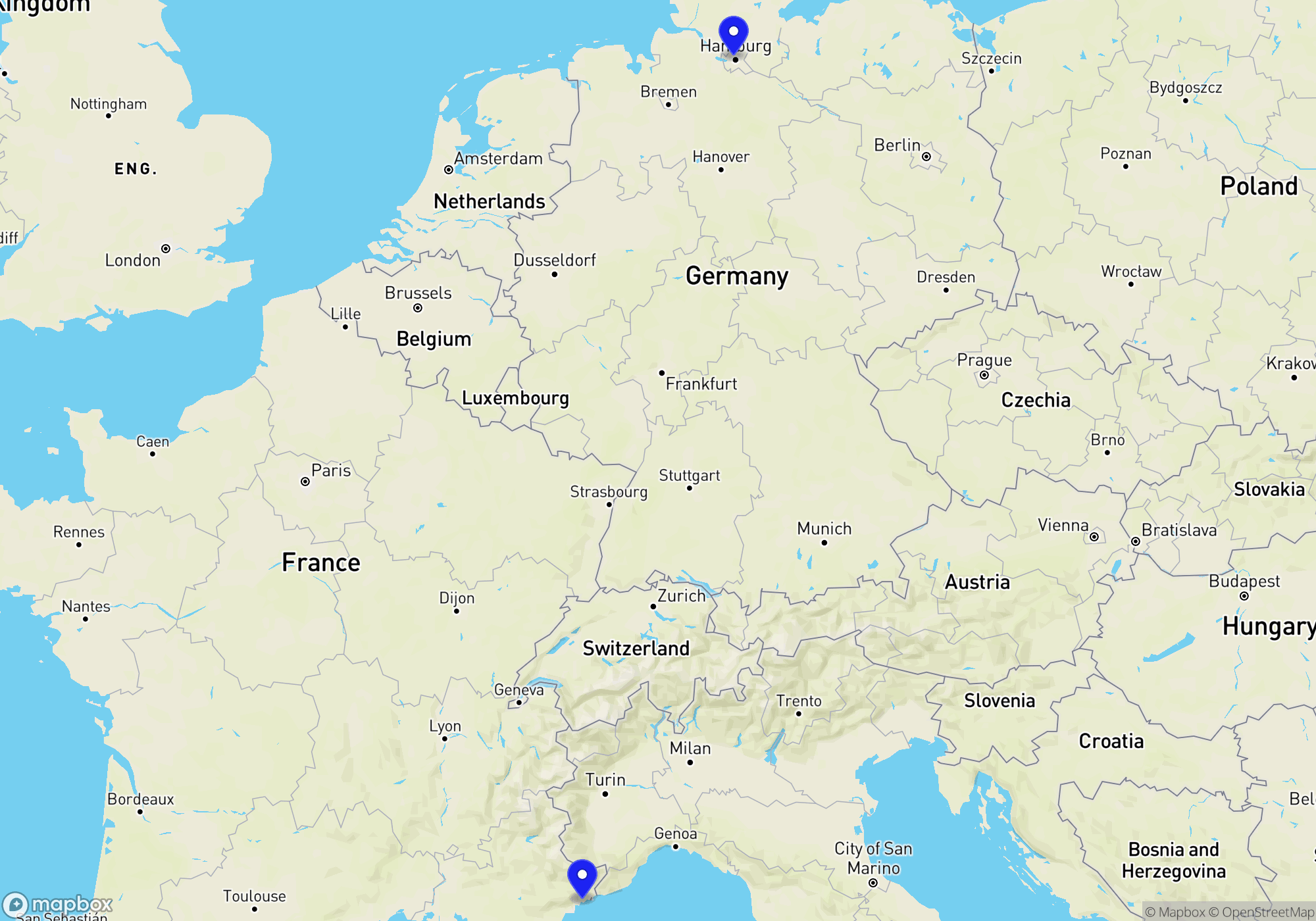
You can buy train tickets directly from the operator or through a reseller. The reseller is typically slightly more expensive (3-5%) but can provide an easier booking experience, especially if you travel with more than one operator.


These operators provide a complete journey either as a direct connection or through their partners. Even if a change of trains is involved, it’s all part of a single itinerary managed by the same train company or its partners, offering a smoother and more coordinated travel experience.

Some operators don’t run direct trains the whole way, but they serve either the departure or arrival station. In many cases, you can combine two of these operators to complete your journey by changing trains along the way. This is often a flexible and budget-friendly way to travel — especially if you’re comfortable piecing together your own itinerary.
Just keep in mind that these are separate journeys, which means a delay on the first leg could cause you to miss the second without automatic compensation or rebooking. It’s a great option for confident travelers who don’t mind a bit of extra planning.

It seems there might be a mix-up since FlixBus is a long-distance bus service rather than a rail operator, known for offering budget-friendly travel options across Europe including routes that can supplement rail travel. While FlixBus provides extensive coverage with their coach services, they do not operate trains. They do, however, offer a multitude of departure times, comfortable seating, free Wi-Fi in many regions, power outlets for charging devices, and an online platform for booking and customer support, which is accessible via their website or mobile app.
As for rail operators, those traveling from Hamburg to Nice typically rely on a combination of national and international rail services. Deutsche Bahn (DB), Germany’s primary railway operator, is known for its Intercity-Express (ICE) trains, which are high-speed and offer various amenities such as onboard dining, free Wi-Fi (on many routes), and both first and second-class seating. Customer support is robust, with service desks at major stations and comprehensive online support.
In France, SNCF, the French national railway company, operates TGV trains that provide high-speed service throughout France and to its neighboring countries. TGV trains offer amenities similar to those of DB’s, including comfortable seating, dining options, and different classes of service. Travelers can access customer support online, at stations, or via phone.
A journey from Hamburg to Nice would typically involve a combination of these services, possibly including a change in a major city such as Paris or Munich, depending on the route chosen. For accurate planning, travelers should consult the official Deutsche Bahn or SNCF websites or a rail planner app to get up-to-date schedules and ticketing options.
If you are traveling by train from Hamburg to Nice and are a European resident, the Interrail Global Pass can be used for this journey. However, if you are a resident of Germany, the Interrail Global Pass would not cover the segment of the trip from the departure point within Germany to the border. The Interrail One Country Pass would not be valid for this journey as it only covers single countries. If you are not a European Union resident, you can use a Eurail Pass to travel from Hamburg to Nice without restrictions concerning residency.
When you arrive in Nice by train, you’ll likely be at the Nice-Ville train station, conveniently located in the city center. From there, you have several options for getting around town. The tram is one of the most efficient ways to explore Nice. The city’s main tram line, Line 1, runs east to west through the city center, connecting easily with other public transport. Line 2, which also serves as a link to the airport, travels from the port to the airport. Tickets can be purchased at machines at tram stops and are valid for the entire bus and tram network in the Nice Côte d’Azur Metropolis. Buses in Nice are another option for reaching destinations that the tram doesn’t cover, with routes extending throughout the city and its outskirts. Single trip tickets are affordable and can be bought onboard or at tram stop machines. Taxis are available and can be hailed on the street or booked in advance; they can be relatively expensive, so it’s best for shorter trips or when public transport isn’t convenient. Ridesharing services such as Uber are operational in Nice, offering a modern, app-based alternative to traditional taxis. They can be a convenient option, especially during late hours or in areas with less frequent public transport.
Nice, located on the French Riviera, serves as a significant hub for both domestic and international train travel. Domestically, the TGV (Train à Grande Vitesse) connects Nice to major cities such as Paris, Marseille, and Lyon. The journey to Paris takes around 5 hours and 45 minutes direct, offering a comfortable and scenic route. Trains to Marseille and Lyon are more frequent, with travel times of approximately 2 hours 30 minutes to Marseille and 4 hours 30 minutes to Lyon. Regionally, the TER trains provide connections along the Côte d’Azur, linking Nice with neighboring towns like Antibes, Cannes, and Monaco, with these short trips usually taking under an hour.
Internationally, Nice is well-connected with Italy. The Trenitalia services provide direct connections to Milan, with travel times of approximately 5 hours. These trains stop at several Italian destinations, including Genova and Ventimiglia, giving passengers the chance to explore the beautiful Ligurian coast. For those heading further afield, it is possible to transfer in major hubs like Milan or Paris to continue journeys into Switzerland, Spain, or beyond, making Nice an ideal starting point for broader European rail adventures.
The best time to visit Nice is generally in the spring months of April to June and in the fall months of September and October. During these periods, the weather is pleasantly mild with warm temperatures and lower humidity compared to the peak summer months, providing an ideal climate for sightseeing and exploring the city. Prices for accommodation and travel tend to be more reasonable than in the high summer season, as the summer months attract larger crowds, which significantly increase costs. Many cultural events and festivals occur during these seasons, such as Nice Jazz Festival in July and the annual Carnival in February and March, offering enriching experiences without the crowded summer tourist rush. Visitors arriving by train can enjoy scenic views along the coast, and the train is a convenient way to travel to and from other French or European cities. Overall, the combination of pleasing weather, manageable crowds, and various local activities make spring and fall particularly attractive times for a visit to Nice.
When traveling by train from Hamburg to Nice, it’s important to pack efficiently to ensure a comfortable journey and stay. Firstly, make sure to have your passport or national ID card for identity verification as you’ll be crossing the Schengen zone, although border checks within the zone are rare. Carry your train tickets or have them stored digitally on your phone. European plug adapters are unnecessary since Germany and France use the same Type C and Type E sockets, but do pack a universal travel adapter if you’re bringing devices from outside Europe. Bring comfortable clothing for the journey and consider layering as train temperatures can fluctuate. A travel pillow and a light blanket or scarf can make the ride more comfortable. Noise-canceling headphones or earplugs help manage the sound levels in shared train cabins. A reusable water bottle is essential, along with some snacks to avoid paying high prices onboard. A printed or digital map or a guidebook could be useful for navigating Nice. Make sure your smartphone is loaded with helpful apps such as rail schedule apps, translation tools, and local maps for offline use. A power bank is also crucial to keep your devices charged on long stretches where power outlets might be limited. Don’t forget personal toiletries in travel-sized containers, any necessary medications, and sunscreen for the sunny Riviera climate. Lastly, ensure you have local currency (Euros) for smaller purchases, though credit cards are widely accepted in urban areas.
Some content on this website is created with the assistance of generative AI. To ensure factual accuracy, all information is reviewed by an expert in European train travel. However, despite careful verification, occasional errors or updates may not be immediately reflected. © 2025 Green Company. All rights reserved.